Abstract
In batch cultures of Zoogloea ramigera the maximum rate of exopolysaccharide synthesis occurred in a partly growth-linked process. The exopolysaccharide was attached to the cells as a capsule. The capsules were released from the cell walls after 150 h of cultivation, which caused the fermentation broth to be highly viscous. Ultrasonication could be used to release capsular polysaccharide from the microbial cell walls. Treatment performed after 48 to 66 h of cultivation revealed exopolysaccharide concentration and apparent viscosity values in accordance with values of untreated samples withdrawn after 161 h of cultivation. The yield coefficient of exopolysaccharide on the basis of consumed glucose was in the range of 55 to 60% for batch cultivations with an initial glucose concentration of 25 g liter−1. An exopolysaccharide concentration of up to 38 g liter−1 could be attained if glucose, nitrogen, and growth factors were fed into the batch culture. The oxygen consumption rate in batch fermentations reached 25 mmol of O2 liter−1 h−1 during the exopolysaccharide synthesis phase and then decreased to values below 5 mmol of O2 liter−1 h−1 during the release phase. The fermentation broth showed pseudoplastic flow behavior, and the polysaccharide was not degraded when growth had ceased.
Full text
PDF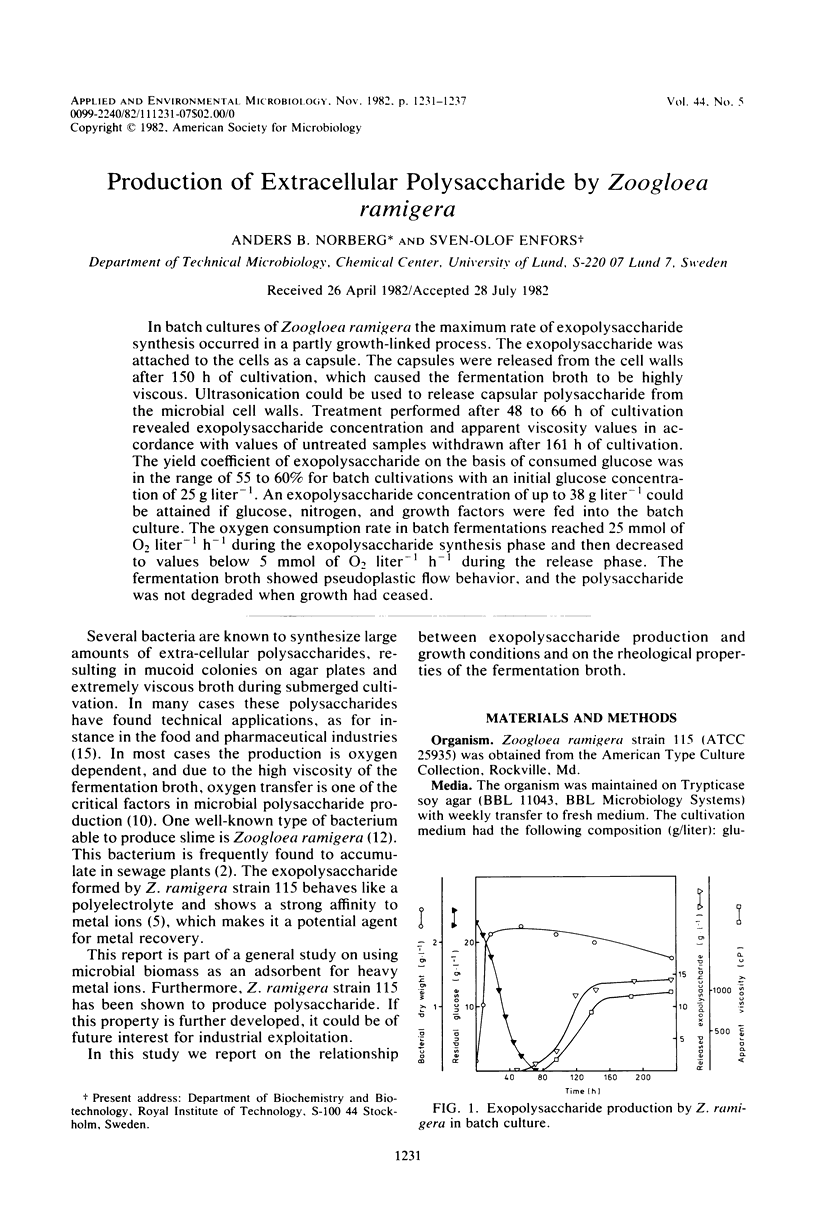
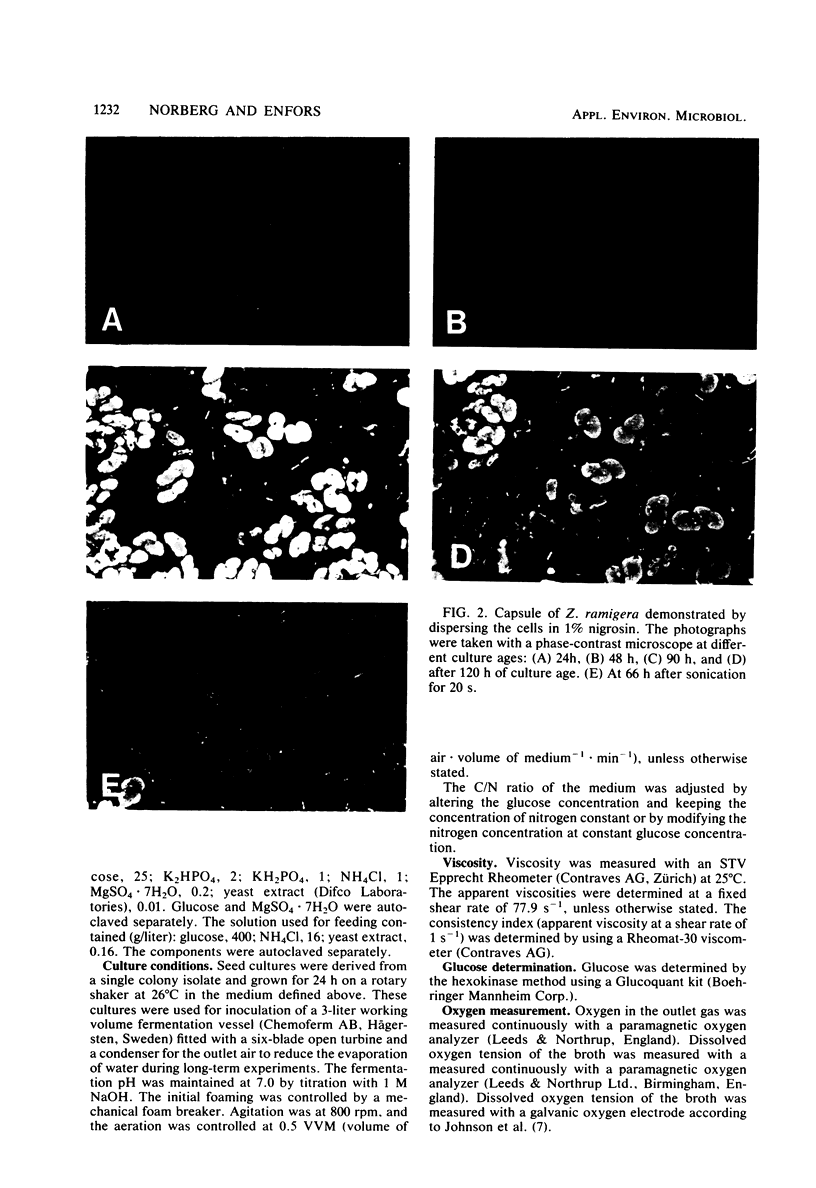
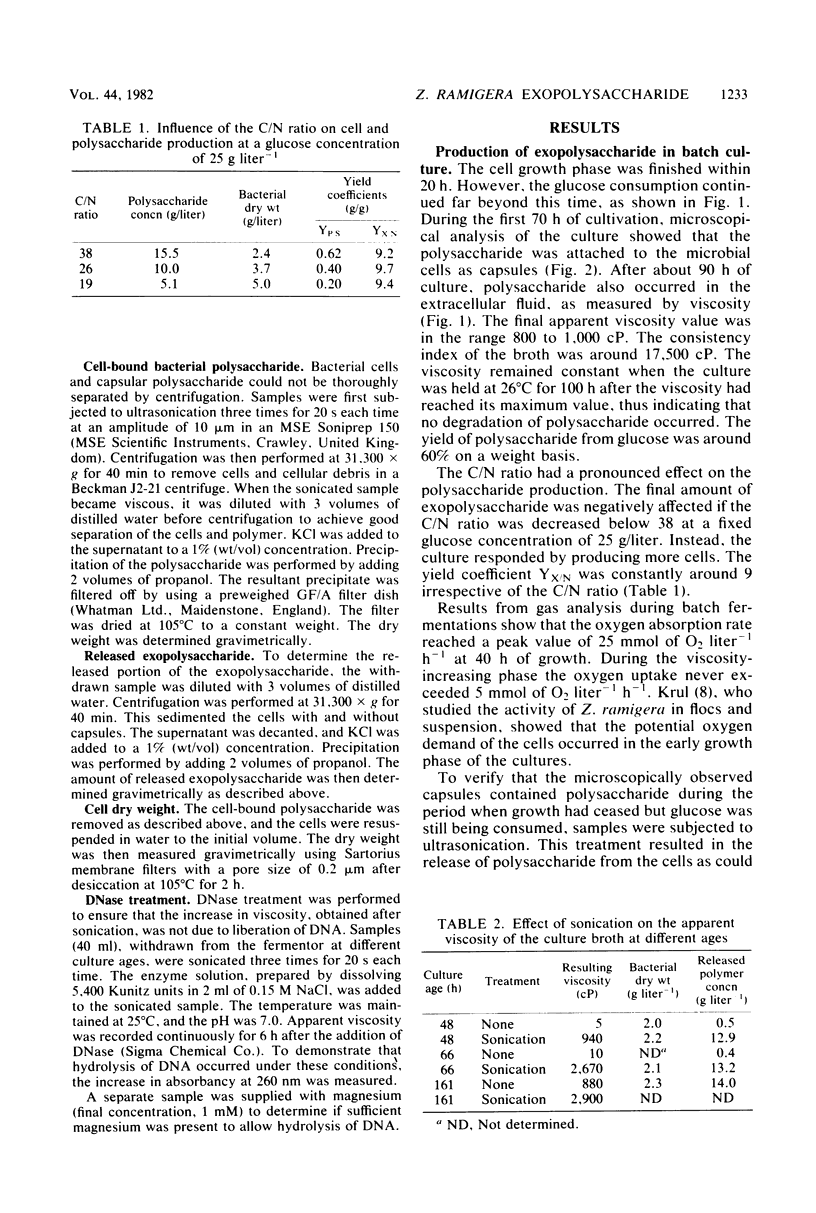
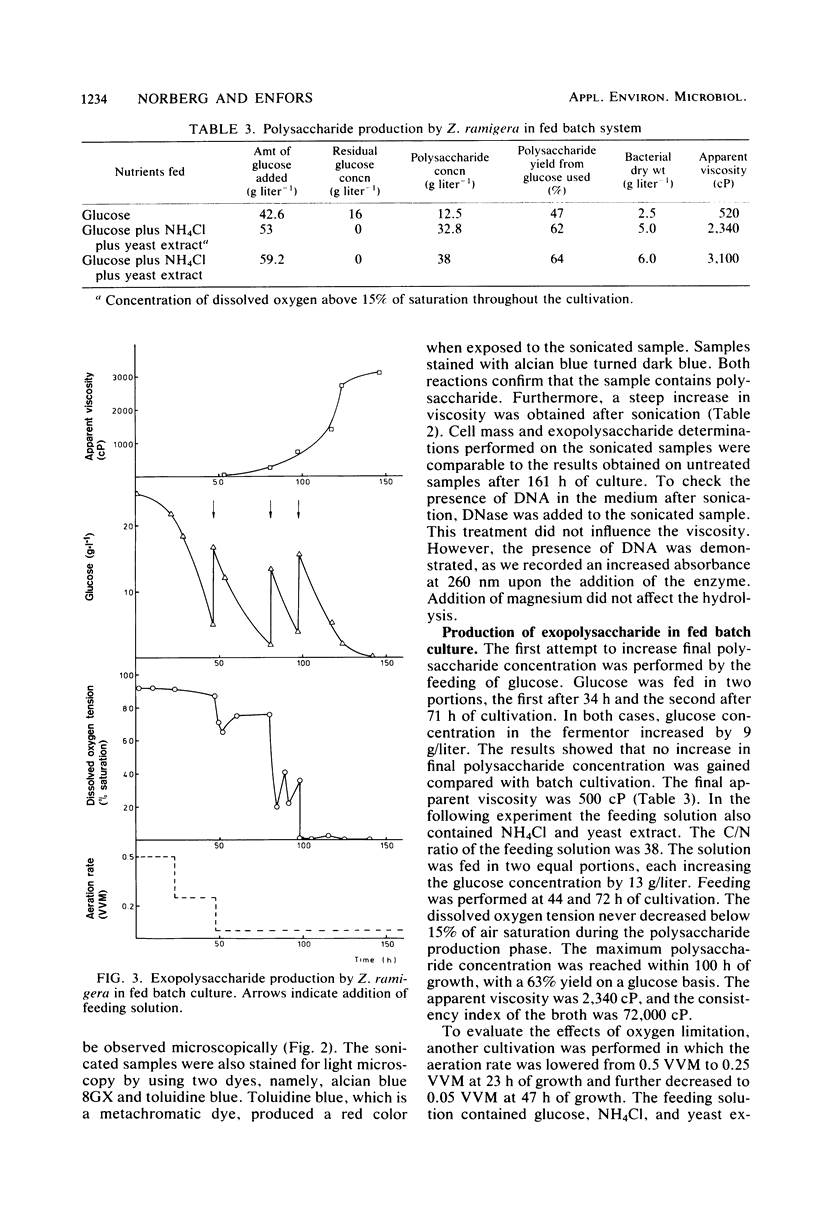
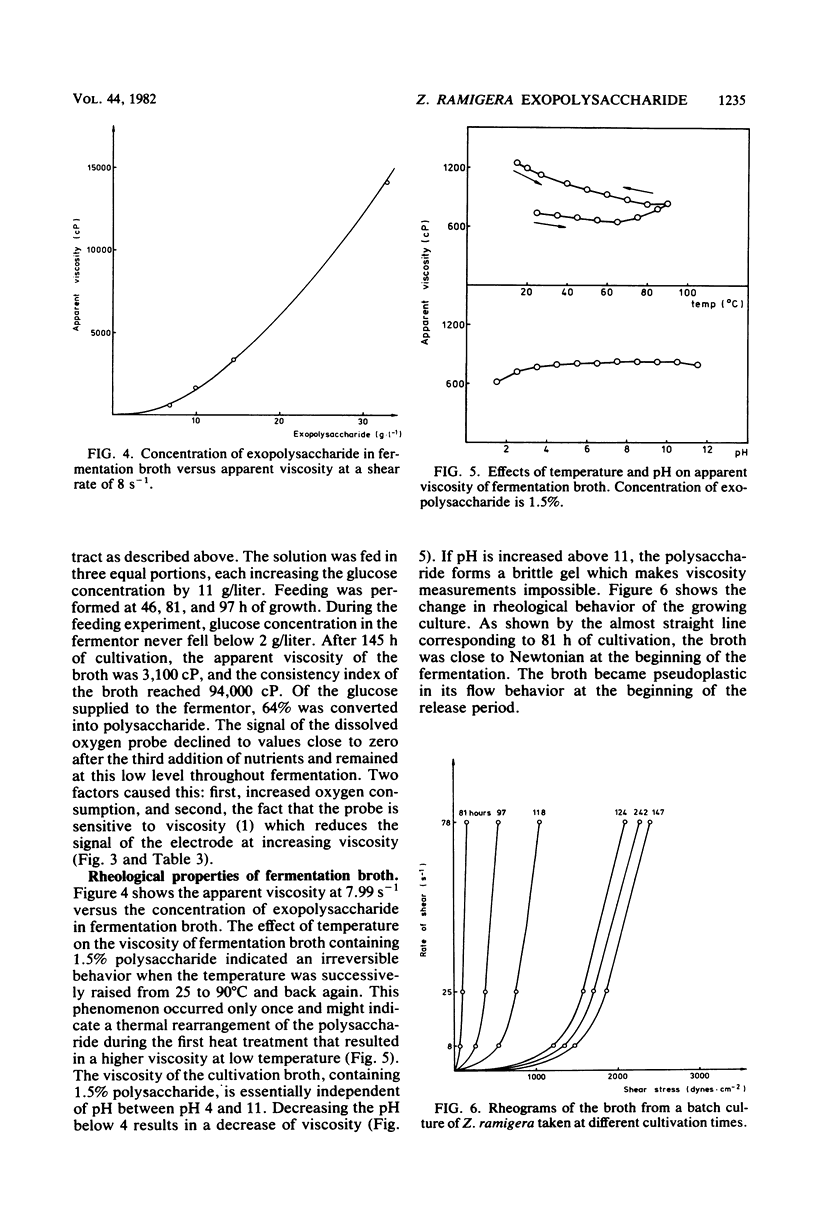

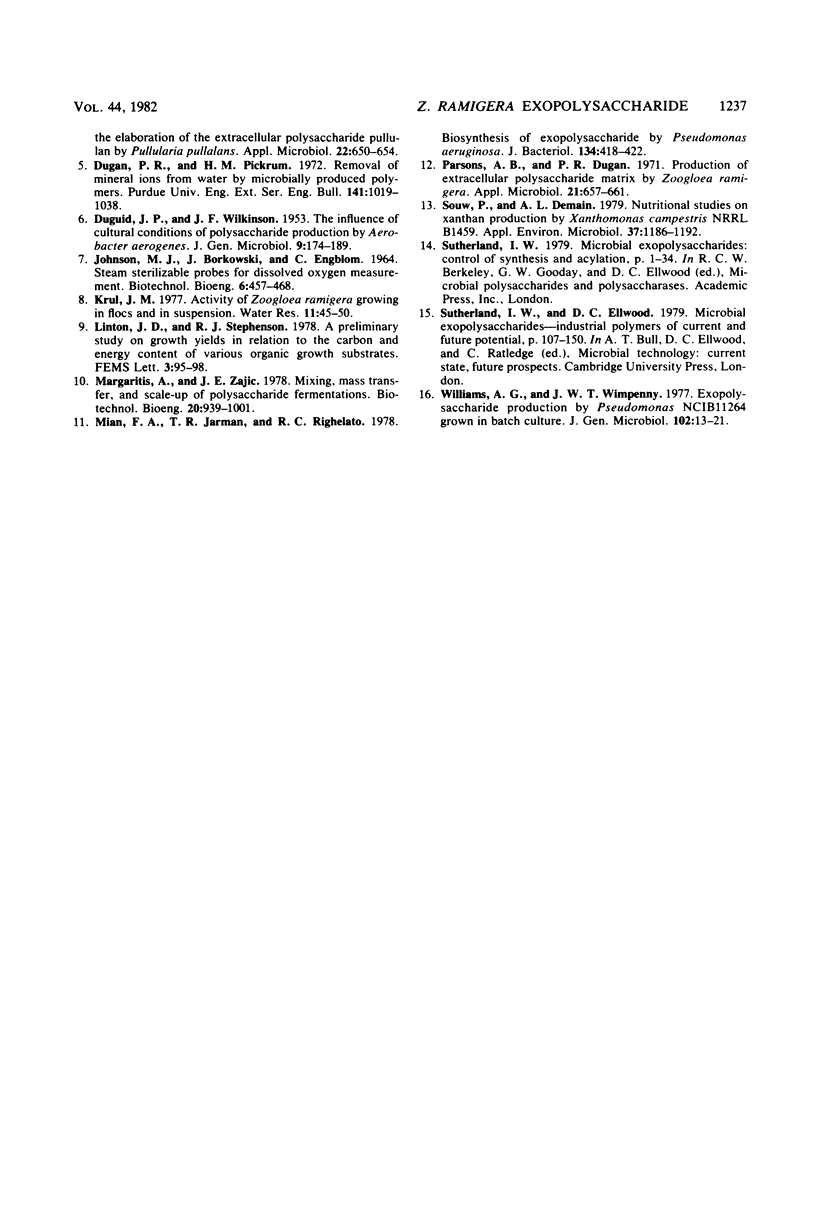
Images in this article
Selected References
These references are in PubMed. This may not be the complete list of references from this article.
- Catley B. J. Role of pH and nitrogen limitation in the elaboration of the extracellular polysaccharide pullulan by Pullularia pullulans. Appl Microbiol. 1971 Oct;22(4):650–654. doi: 10.1128/am.22.4.650-654.1971. [DOI] [PMC free article] [PubMed] [Google Scholar]
- DUGUID J. P., WILKINSON J. F. The influence of cultural conditions on polysaccharide production by Aerobacter aerogenes. J Gen Microbiol. 1953 Oct;9(2):174–189. doi: 10.1099/00221287-9-2-174. [DOI] [PubMed] [Google Scholar]
- Mian F. A., Jarman T. R., Righelato R. C. Biosynthesis of exopolysaccharide by Pseudomonas aeruginosa. J Bacteriol. 1978 May;134(2):418–422. doi: 10.1128/jb.134.2.418-422.1978. [DOI] [PMC free article] [PubMed] [Google Scholar]
- Parsons A. B., Dugan P. R. Production of extracellular polysaccharide matrix by Zoogloea ramigera. Appl Microbiol. 1971 Apr;21(4):657–661. doi: 10.1128/am.21.4.657-661.1971. [DOI] [PMC free article] [PubMed] [Google Scholar]
- Souw P., Demain A. L. Nutritional Studies on Xanthan Production by Xanthomonas campestris NRRL B1459. Appl Environ Microbiol. 1979 Jun;37(6):1186–1192. doi: 10.1128/aem.37.6.1186-1192.1979. [DOI] [PMC free article] [PubMed] [Google Scholar]
- Williams A. G., Wimpenny J. W. Exopolysaccharide production by Pseudomonas NCIB11264 grown in batch culture. J Gen Microbiol. 1977 Sep;102(1):13–21. doi: 10.1099/00221287-102-1-13. [DOI] [PubMed] [Google Scholar]




